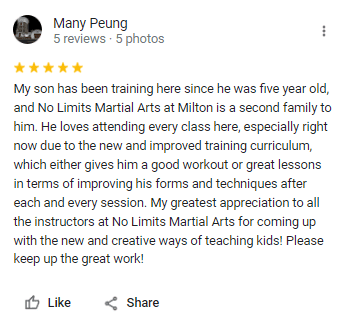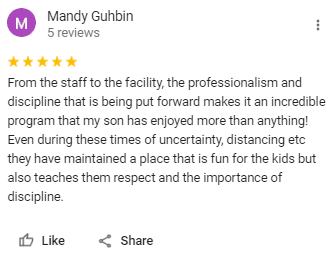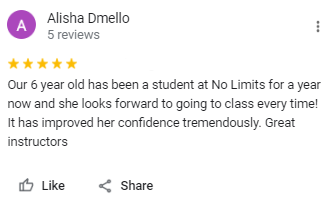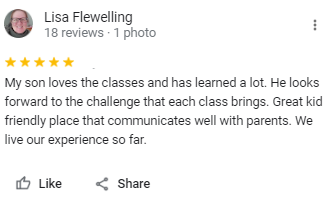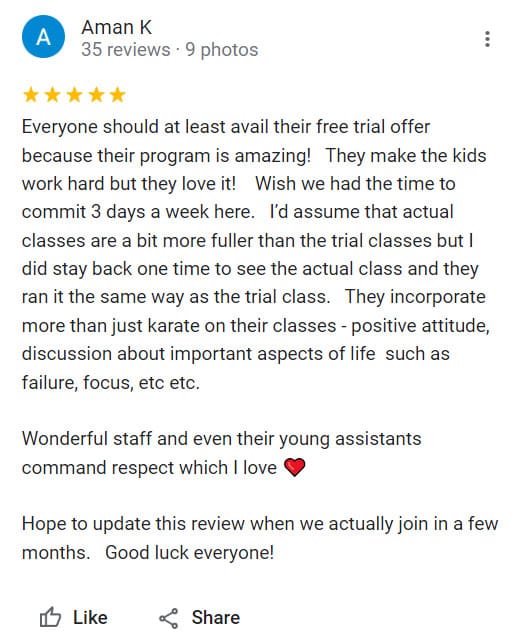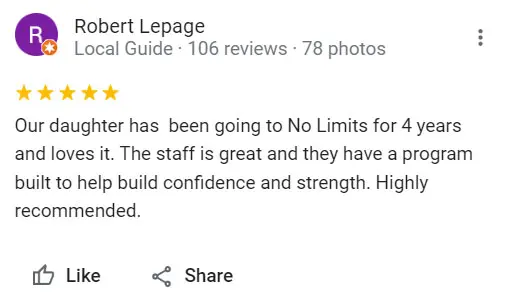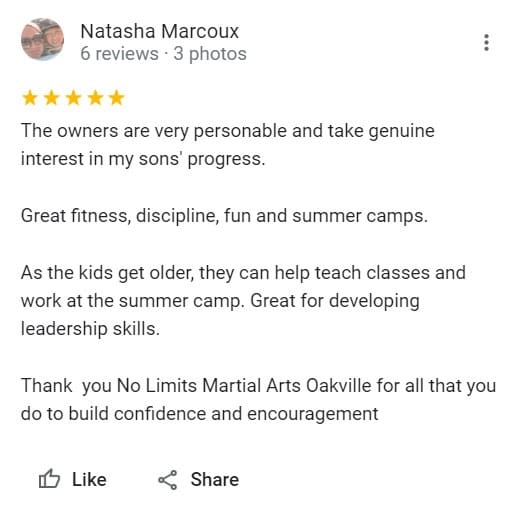Milton & Oakville's Best Martial Arts SCHOOL
Find out why so many families in Milton & Oakville turn to No Limits Martial Arts for their martial arts training. Parents just like you have discovered how to maximize their child's potential, and accelerate their development!
Learn More & get started today with our exclusive Trial Class Program!
- "The No Limits Martial Arts Team is AMAZING, and I cannot say enough good things about everyone! They work so hard to keep the kids focused & engaged. I feel completely safe knowing that my son is having FUN, and getting daily exercise!" - Yolanda S.
Learn More & Access Your
EXCLUSIVE TRIAL CLASS OFFER!
By opting in, you agree to receive periodic text messages & emails from No Limits Martial Arts. Your information will never be shared. Reply STOP to cancel. Standard rates may apply. View our Terms of Service & Privacy Policy.
Kids Martial Arts
in Milton & Oakville
Give your child the gift of confidence and skill-building with the No Limits Martial Arts Kids Program! Our experienced instructors use engaging & fun activities/drills to teach self-defense, promote physical fitness, and develop essential life skills.
- DISCOVER -
- DISCOVER -
Teen Martial Arts
in Milton & Oakville
Looking for a fun and empowering way to build confidence and stay fit? Join our Teen Program at No Limits Martial Arts! Our experienced instructors will help your teen develop essential life skills while teaching self-defense techniques.
- DISCOVER -
- DISCOVER -
MILTON & OAKVILLE’S BEST MARTIAL ARTS PROGRAM
6 REASONS WHY PARENTS CHOOSE NO LIMITS MARTIAL ARTS

1. CONFIDENCE BUILDING PROGRAM
At No Limits Martial Arts, our Confidence Building Program teaches children essential life skills such as self-esteem, self-discipline, and respect for others.
Our experienced instructors use martial arts to create a fun and engaging environment for learning. Through our award winning martial arts curriculum, children will develop a positive attitude towards themselves and the world around them.

2. FLEXIBLE SCHEDULE
As busy parents ourselves, we understand that life can get busy. That’s why we offer a flexible schedule with classes available three times per week to fit your busy lifestyle.
The No Limits Martial Arts Team will be happy to go over our entire Class Schedule with you!

3. COMMUNITY
The No Limits Martial Arts Team is passionate about making a positive impact in the Oakville & Milton community.
No Limits Martial Arts is committed to helping the local community, as well as teaching students to be confident leaders.
As part of our commitment, we support the MCRC Infant Food Bank, and the She Can! Programs.

4. "YES, I CAN!" ATTITUDE
At No Limits Martial Arts, we believe in teaching our students a “Yes, I can” attitude. Our experienced instructors use martial arts to instill self-confidence, self-discipline, and a positive attitude towards life’s challenges.
Through our curriculum, students learn to overcome obstacles and achieve their goals, both on and off the mat.

5. EXPERT INSTRUCTORS
The No Limits Martial Arts Team are expert instructors who are passionate about martial arts, and dedicated to helping students achieve their full potential.
With years of experience and a commitment to ongoing training, our instructors bring a wealth of knowledge and skill to every class. From beginners to advanced students, our instructors provide personalized guidance and support to help students reach their goals.

6. THE NO LIMITS GUARANTEE
At No Limits Martial Arts, we are committed to providing the highest quality martial arts training in a safe and supportive environment.
That’s why we offer a No Limits Guarantee!
Try our Trial Class Program and see why so many Oakville & Milton Parents LOVE our Confidence Building Program!
what makes the No limits martial arts program different?
For over 12 years, we’ve been dedicated to changing the lives of people in the Oakville & Milton Communities, one student at a time, through martial arts, education and coaching. No Limits Martial Arts Milton & Oakville provide a safe, comfortable and welcoming atmosphere for all students and family members. We take pride in creating an environment for individuals to achieve, develop and succeed in their personal goals.
We strongly believe that martial arts can be for everyone, regardless of age, gender or experience levels. Throughout all of our programs, students will not only learn the necessary skill sets to protect themselves, we stand behind our realistic and practical approach, confident it will enable every member to achieve greatness and live their best life.
The No Limits Martial Arts Program is specifically designed to BUILD CONFIDENCE, develop FOCUS & DISCIPLINE, all while EMPOWERING each student to be their BEST! Our team of World Class Instructors will support & encourage each student on their martial arts journey! When you choose No Limits Martial Arts – you become part of the No Limits Martial Arts Family!
Come see why so many families in Milton & Oakville choose No Limits Martial Arts!
No Limits Martial Arts Milton Reviews
5/5
No Limits Martial Arts Oakville Reviews
5/5
About our programs
Kids Martial Arts
in Milton & Oakville
Parents LOVE our Milton & Oakville Kids Martial Arts program because it teaches not only self defense, but also vital life skills like focus, discipline, respect, and more! Watch your child's confidence flourish and their grades improve with this awesome Child Greatness program.
- DISCOVER -
- DISCOVER -
Teen Martial Arts
in Milton & Oakville
Combining confidence-raising fitness and life-changing self defense, our Milton & Oakville Teen Martial Arts program keeps your teen's wellness and happiness in mind. It's time to get your teenager active, making new friends and bettering themselves.
- DISCOVER -
- DISCOVER -
Winter Break Camp
in Milton & Oakville
Our Milton & Oakville Winter Break Camp are the perfect activity for the whole family! We teach life-saving self defense in a FUN community setting with amazing, supportive instructors that will help you achieve your fitness and personal goals.
- DISCOVER -
- DISCOVER -
AfterSchool Program
in Milton
Find out why parents in Milton LOVE our After School Program. Imagine every day after school, while you work, your child is safe... and learning amazing skills for life.
- DISCOVER -
- DISCOVER -
Frequently Asked Questions
The most frequent questions and answers about the No Limits Martial Arts Program
Classes are offered three times per week – the No Limits Martial Arts Team will be happy to go over the full schedule with you!
Great question! The No Limits Martial Arts Program is for students aged 5 and up!
We offer a Kids Program, Teen Program & Adult Program!
Great question! After the trial class period – the No Limits Martial Arts Team will touch base with you and pass along all of the registration information! There is NO OBLIGATION to continue after your trial is complete!
No! There is no additional purchase necessary, and NO hidden fees. It’s our way of showing you why we believe so much in the No Limits Martial Arts Program!
Make sure you wear comfortable clothes for JUMPING, MOVING & BEING ACTIVE!
Be sure to bring a water bottle to your martial arts classes. You will find No Limits Martial Arts Milton & Oakville has martial arts classes for kids, teens and adults that are a great workout and lots of FUN!
More importantly – how many students per instructor? Our programs are popular and some classes will have 20 students, but that means we will also have 4 instructors on the floor to keep the ratio 5 students to 1 instructor.
No Limits Martial Arts
Milton
We’re located at 151 Steeles Avenue East, stop by and say hello!
No Limits Martial Arts
Oakville
We’re located at 1545 Cornwall Road, Unit 46, stop by and say hello!

